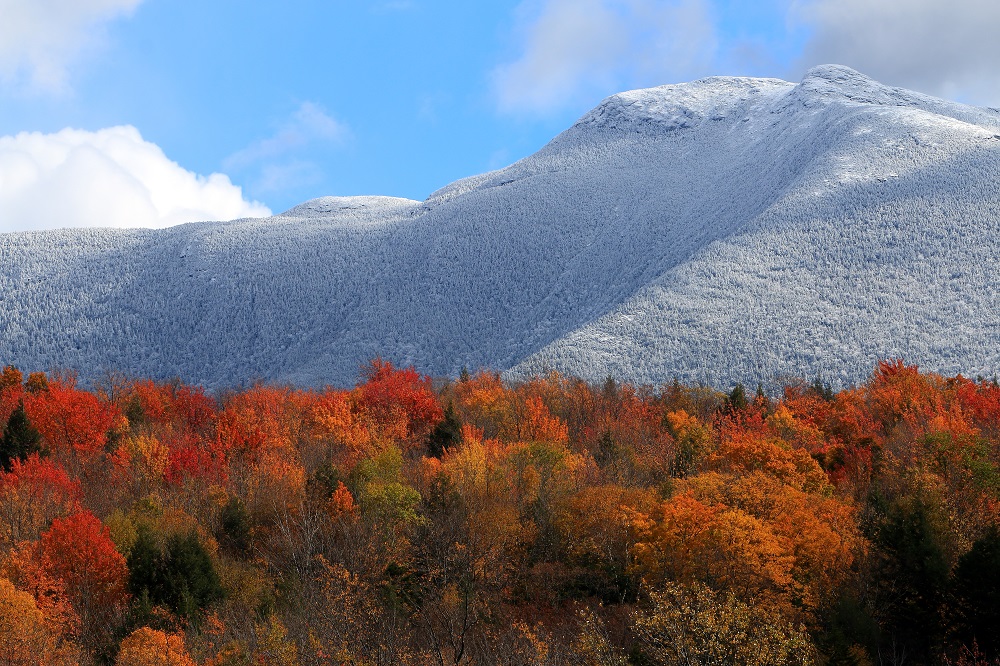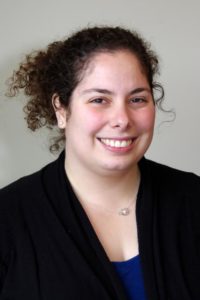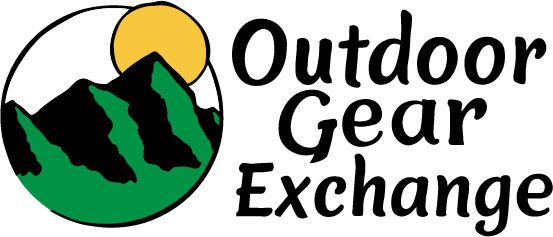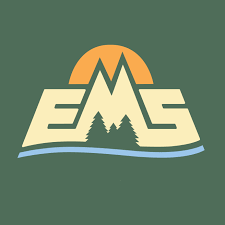This article was written by Melody Walker and previously appeared in the Fall 2019 Long Trail News.

In the beginning of all things, Gluskabe, the culture hero of the Abenaki people, formed himself out of dust and began his work of transformation. As he rolled, the valleys and the mountains took shape, but in the process of transforming the world, he also formed himself. Creation always includes self.
Indigenous stories that describe the transformation and the creation of a place have fascinated visitors to indigenous homelands for centuries, and are often seen as little more than myths and legends. Rather than reiterate stories that can be found in print by our many amazing storytellers, I would like to offer another gift—how to look at the mountains through a different cultural lens.
One of my oldest friends, an elder from the Penobscot Nation, once mentioned that indigenous people never went above the tree line unless they wished to be closer to the thunder beings and to the creator. That is a place of power. We ventured one day to Cadillac Mountain and sent up prayers in smoke for the community as close to the sun as we could manage.
I have not thought much about this since that meeting, but in it lies the key to stories of the Green Mountains and the essential role adventure plays in fulfillment. Both Euro-American and Wabanaki people view mountains in much the same metaphorical sense. Whether a person ventures to the mountaintop to pray, or another goes to reach a personal goal to the peak, both are on the path to inspiration. Choosing the journey requires that individuals leave themselves open to the wonder of the world and all its potential lessons. However, we do not view the end of the journey as conquering the mountain. Our journey is for ceremony, and we walk upon the mountain as a relative.
Apart from the metaphorical, we differ on the ways in which we view the mountains as they stand in their physical form. Indigenous people see an animate world. As Vine Deloria Jr. so eloquently explained, “The world that [the Indian] experiences is dominated by the presence of power, the manifestation of life energies, the whole life-flow of a creation.” We are all made of the same source of life—power runs through all things and binds us together as family.
Ethnographer Ruth Homes Whitehead explained: “[Power] is everywhere at once, and yet it is also conscious, particulate: it is Persons.” Not only are all things made of power, but all members of creation are persons. When we speak of Grandfather Sun, Grandmother Woodchuck, or the Old Man in the Mountain, the language we use is intentional. When I lived at the base of Mount Mansfield for more than a decade, I greeted them often as relatives, so they knew they were not forgotten.
As we view our beautiful Green Mountains, they are looking at us too. Our stories of connection are more than stories, they remind us how to exist in a world so filled with ego from new value systems that many can no longer see the faces in the mountains. Our world is in desperate need of this lesson—“walk softly, there are people everywhere.”
As Abenaki storyteller Joseph Bruchac explained, “Our stories open our eyes and hearts to a world of animals and plants, of earth and water and sky. They take us under the skin and into the heartbeat of Creation…Our stories remember when people forget.” We still have knowledge of the little people that love to eat mushrooms and play tricks on travelers through the woods. We still remember when Gluskabe beat back the ice monsters thrashing around Ndakinna and knocking the tops of mountains here and there in what people know as glacial erratics. We look for the sidehill creatures with long back legs and short front legs so it is easier to run up the side of the mountain.
We tell stories of change in a landscape that is animate not because the world was once a place of creation, but rather because it is a place of creation. The stories tell of a world shaped positively by human beings. Our connection to place is cemented through ceremony and stories, old and new. There is an incredible amount of belonging in the way Abenaki people view the world, and through this cultural lens we not only see creation looming before us in the majesty of a mountain, but we can also see it in the petals of the flower at its base. We are a community of many types of persons and we all belong to each other. For dominant society, these aspects may seem foreign, but for those who spend time within Ndakinna’s forests and climb to the peaks of our majestic kin the possibility of understanding is there.
When I was asked about place names, stories, and sacred sites to share with readers, my most salient question while researching our lore was, why? What can our stories provide to those outside of our culture? Is knowing the root of the desire more important than the information itself?
Perhaps what people are most craving is a sense of belonging—to name what is felt but is rarely spoken. “People” in dominant society refers only to humans. Abenaki stories teach us what belonging means, what it means to be a person, and what it means to walk as if all things mattered. Dominant society is largely devoid of these ideas, and naming a difficult concept without the proper words must come from other viewpoints.
Our sacred sites and stories of place are not needed by our new neighbors, because what is needed is to acknowledge we can all create new stories together. Love this place with us. Walk in a sacred way through the mountains, through the streams, and in the woods. The real power of a story is to reaffirm and continuously celebrate the most important relationship you have—the bond with creation. We belong to the places we love. Perhaps all that is needed is to remember we are all worthy of belonging. Author Robin Kimmerer wrote, “For all of us, becoming indigenous to a place means living as if your children’s future mattered, to take care of the land as if our lives, both material and spiritual, depended on it.” Tell us your stories.
While much of the information contained in this piece is not new, I would like to offer a different insight into the implications of this cultural lens. We indigenous people cannot carry our spirituality in a book. Our homeland has been drastically altered, and a new set of values has overtaken our own. Reciprocity with us or our non-human kin is rare. Change this narrative. Include the Abenaki voice as we have loved and looked after this place for ten thousand years and will continue to do so for another ten thousand.
If our world is to be cared for properly, including us in policy and brainstorming is not politically correct, it is necessary. Our worldview and our spirituality are intricately tied together in place. If the mountains where our deities reside are privately owned, scarred up for ski resorts, mined for resources, or—in the case of the homeland of one indigenous group—have the faces of presidents carved into them, one might ask: do all people have freedom of religion?
Often people see our stories and place names as fixtures of the past, but our views on the world change, just as we are part of a living culture that changes. Ask what our stories are now. In the past we seldom visited peaks outside of ceremony, but many of us love to climb today, and ceremony is still performed. We evolve with our homeland as changes overtake us, but we hold close what we love. Our stories will always remind us to see the faces in the mountains.
 Melody Walker is an educator, activist, artist, and citizen of the Elnu Abenaki Band of Ndakinna. She has a master’s degree in history from the University of Vermont. Her TEDx talk entitled “Weaving a Thread Through The Seven Generations” can be viewed on YouTube.
Melody Walker is an educator, activist, artist, and citizen of the Elnu Abenaki Band of Ndakinna. She has a master’s degree in history from the University of Vermont. Her TEDx talk entitled “Weaving a Thread Through The Seven Generations” can be viewed on YouTube.



















Thank you so much for this article. Melody, I learned a lot from it, and it was beautifully written. I am glad the GMC is featuring the ideas of folks of color, and specifically indigenous people. I am the Program Director at a VT Quaker foundation (Farm & Wilderness) that runs overnight summer camps in and involved with the Green Mts. We have been trying to teach our campers about the history of the land we are on, as well as an appreciation of the relationship of indigenous folks to the land, and have developed partnerships with the Akwasasne Mohawk tribe and some Abenaki folks. I intend to circulate your article to our camp leaders for our continued education. Thanks!
Melody, thank you for a beautiful article and for sharing this perspective, one that everyone needs to hear and understand.
Thank you for such a wonderful message. My spirituality is grounded in nature and I have much to learn from First Nations.
I keep coming back to read, and share, this article. Beautifully written, it resonates loudly with me. Thank you.